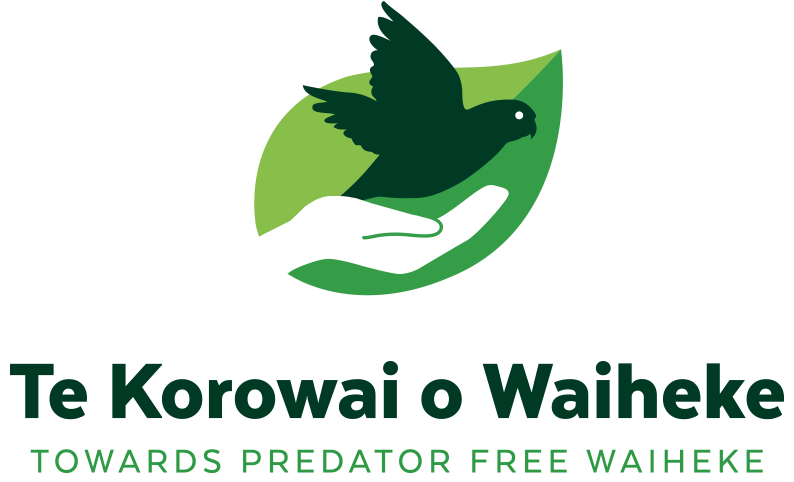An Account Of Seabird Monitoring (ōi) — Written by Te Korowai o Waiheke Team Member
The sun has just dipped below the horizon. Wrapped in scarves and beanies, we sit quietly on the rugged and windswept headland as the light slowly fades from the sky. Mugs of tea from thermos are passed around and our red-light headlamps adjusted. Dark shadows begin to swoop past our streams of light circling closer and closer. Every lap around our heads sounds like a hoard of creaky doors coming in to land. We ready ourselves with a pillowcase in hand for the onslaught to begin. The rasping and crawling reaches our hiking boots and a bundle of brown birds wrestle to get the closest to the call from our speaker. Each little face is powdered with streaks of grey against a sleek chocolate coat. One waddles haphazardly through the manuka close enough for me to scoop up and carry back to our research team.
Seabird monitoring is incredibly important to learn about a species population numbers, as well as foraging habitat and breeding colonies. Ōi (grey-faced petrels) prefer offshore islands like the Noises and Hen and Chickens, or exposed headlands like Tāwharanui for nesting as they are often surrounded by strong updrafts for take-off. Their metre long burrows provide shelter from the elements, each pair raising one feisty ball of fluff every year. Ōi can live to be 50 years old, which we know because of the numbered leg bands that are used to identify when and where they were surveyed or raised. If you were to stumble across a bird with a leg band, the number present can be traced all the way back to when it was first recorded to calculate how old it might be or how far it has travelled.
Once the petrel is banded, I take it back to the edge of the cliff where it came in to land. Showing no sign of wanting to leave, it murmurs quietly beside me, nibbling gently at the buttons on my pants. Apparently, my knees seem like a good high point for take-off so it clambers into my lap, but then my shoulder looks even more appealing so it climbs higher still. Soon I am eye to eye with the sweet bird and the salty, earthy smell of its feathers fills my nose. He sits for a bit before leaping off, full moon shining brightly and the cacophony continues into the night.
- Written and captured by Field Team Technician Charlie Thomas
Photo by Charlie Thomas

